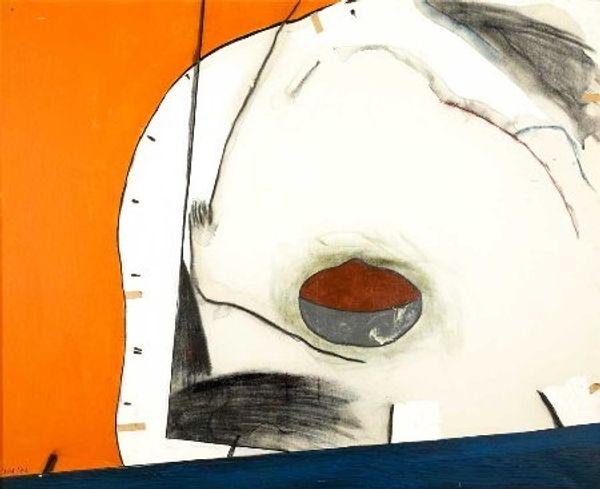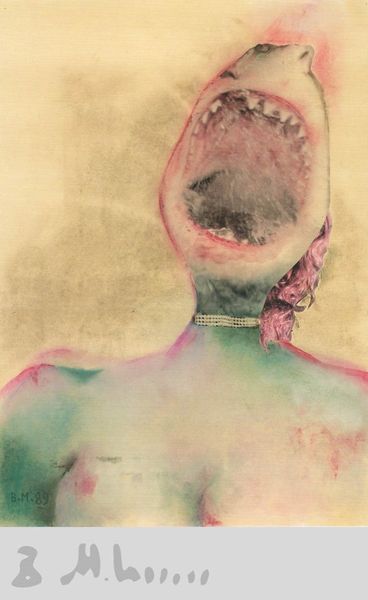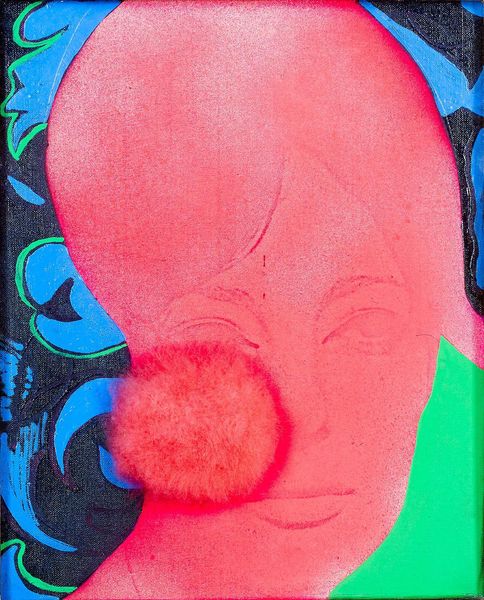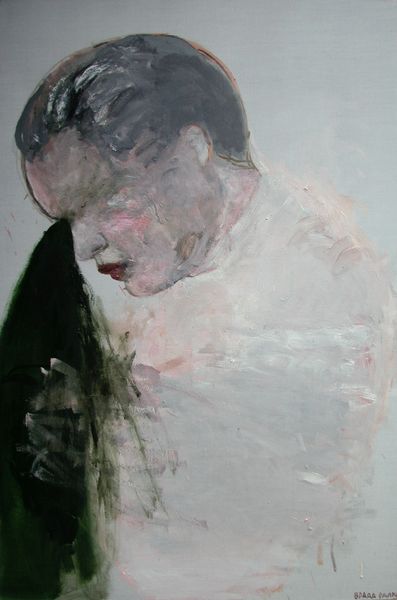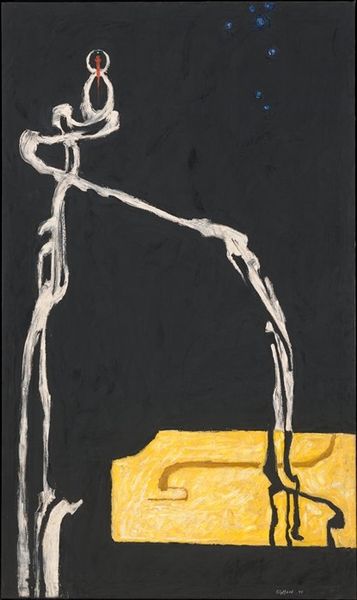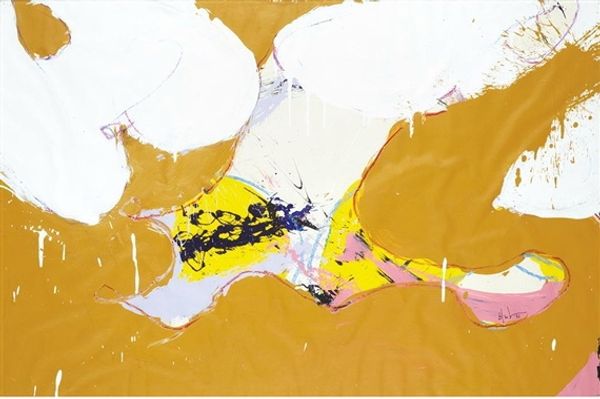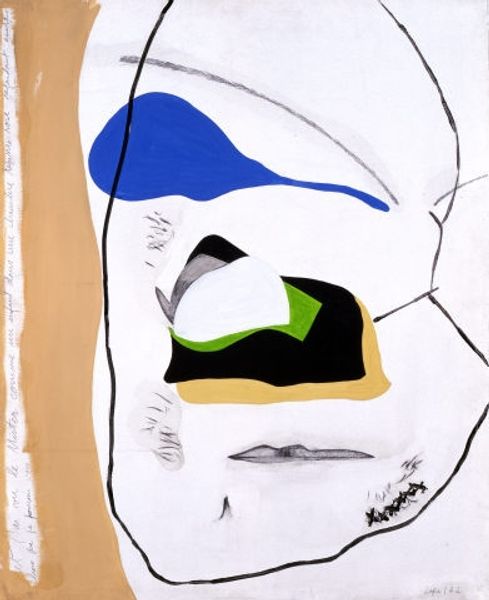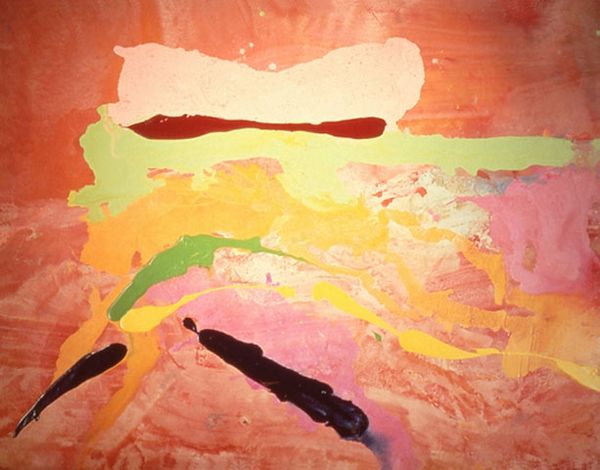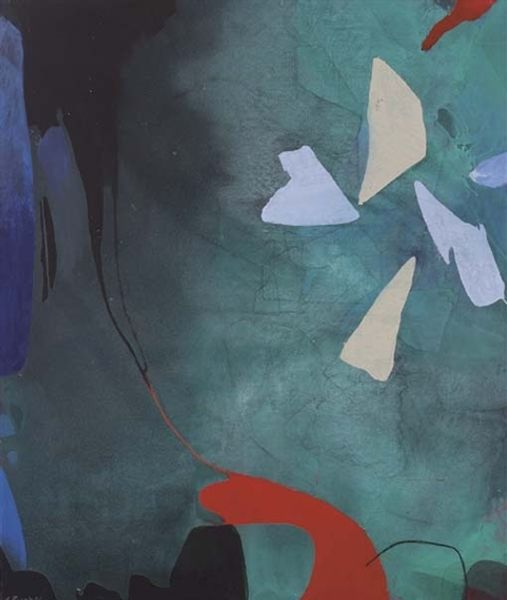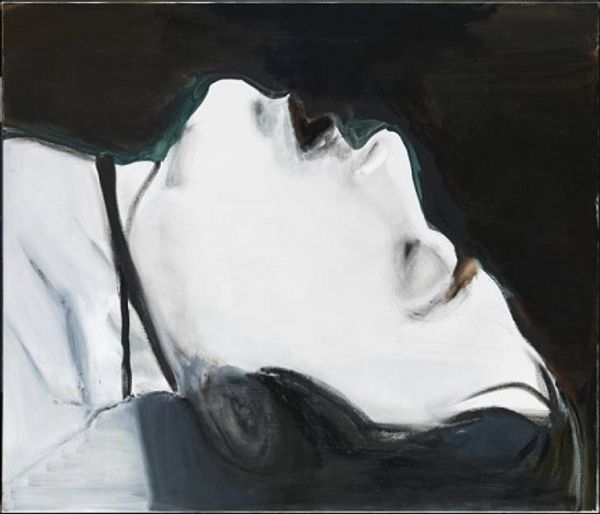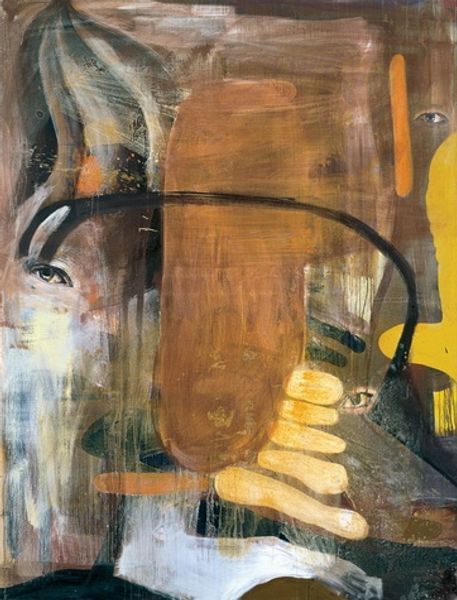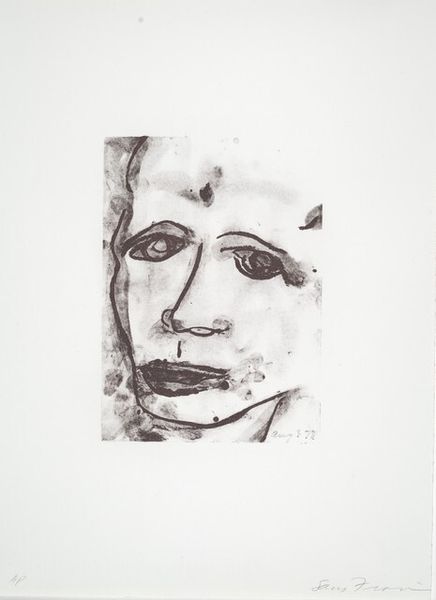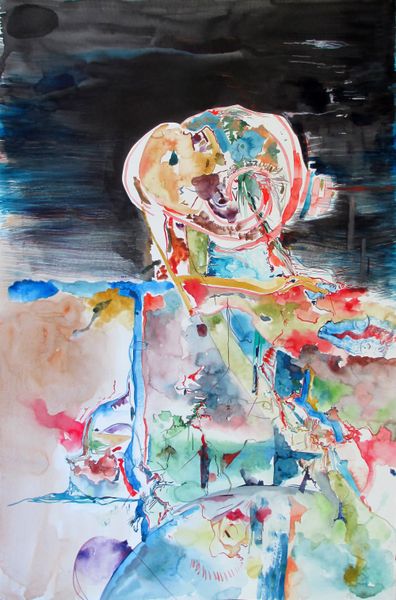
mixed-media, painting, acrylic-paint
#
portrait
#
mixed-media
#
contemporary
#
painting
#
acrylic-paint
#
figuration
#
oil painting
#
acrylic on canvas
#
portrait art
Copyright: Enzo Cucchi,Fair Use
Curator: Enzo Cucchi's "Sotto Lingua," created in 2000, presents us with an intriguing example of contemporary mixed-media painting. What are your immediate thoughts? Editor: The high-key yellow grabs me right away, almost oppressive in its intensity. It casts a strange light on the subject, a figure that feels both present and distant, primarily due to its minimal use of linear perspective, where one of the artist's concerns clearly lies on the surface and medium as opposed to any vanishing points of illusionistic space. Curator: The materiality is definitely worth considering. Cucchi combines acrylic paint with other media – precisely what, the museum label doesn't say. But the textural contrasts speak volumes. Look at how the slick, almost saccharine, yellow background abuts the rough, almost violently applied pigment inside the figure’s mouth. What labor goes into the preparation? Where does that raw pigment source from? It invites consideration of production as much as reception, which I find really important in assessing Cucchi's work. Editor: Absolutely. The contrast you highlight definitely creates tension. The painting uses this yellow background, which almost flattens the figure. The artist then draws attention to the figure through color contrasts, especially where you noted inside the mouth. Note the recurring motif of a single eye. In many ways, this makes the artwork symbolic of internal self-evaluation, and the darkness within is contrasted by a kind of artificial or enforced yellow. Curator: Or maybe consider the artist’s Italian background for this choice of background; could this be an Italian sunlight, recalling ancient walls in Pompeii as it is consumed? Looking at how this work may act as an analogy to consumption itself could change one’s reading. Editor: Interesting suggestion! I am intrigued how we perceive portrait art through an intrinsic symbolic structure instead of focusing on an accurate representation of lived people and situations, per usual. Curator: Perhaps that reading emphasizes the figure not just as an individual but as a site of consumption of words, of culture, digested and rendered… something else. Its relation to those little fragmented ‘eye’ portraits that litter the piece invite an active interpretation, which has some merit considering the period it was made in. Editor: It seems our discussion reveals two perspectives – how art is an accumulation of social values versus how one experiences the art primarily through its aesthetic arrangement. Thank you for giving an opening into new interpretations and new modes of thinking. Curator: And thank you. May your reflection change!
Comments
No comments
Be the first to comment and join the conversation on the ultimate creative platform.
